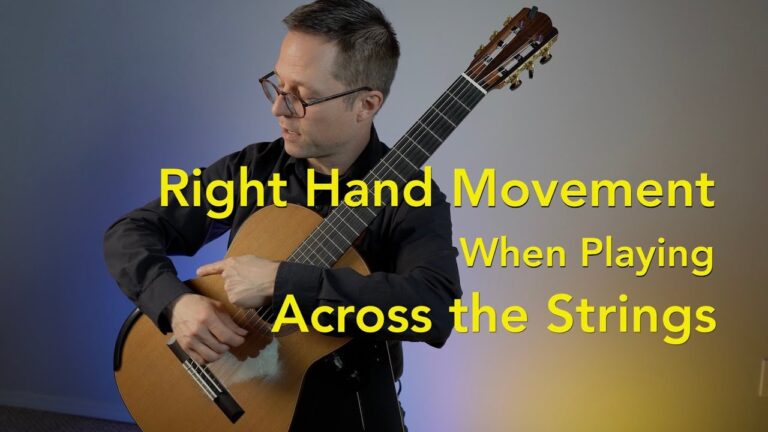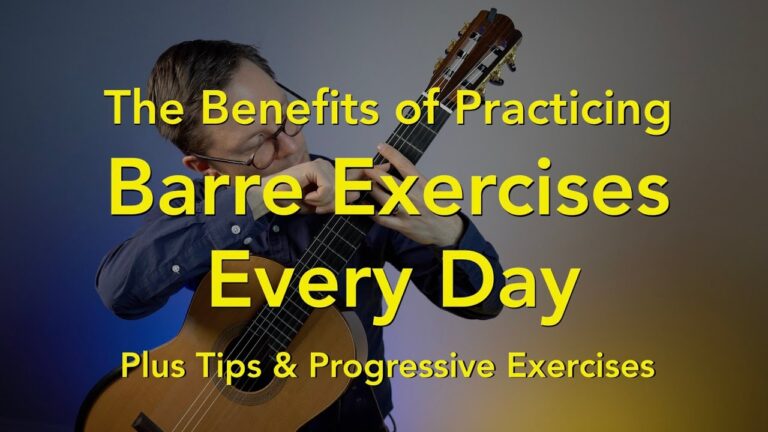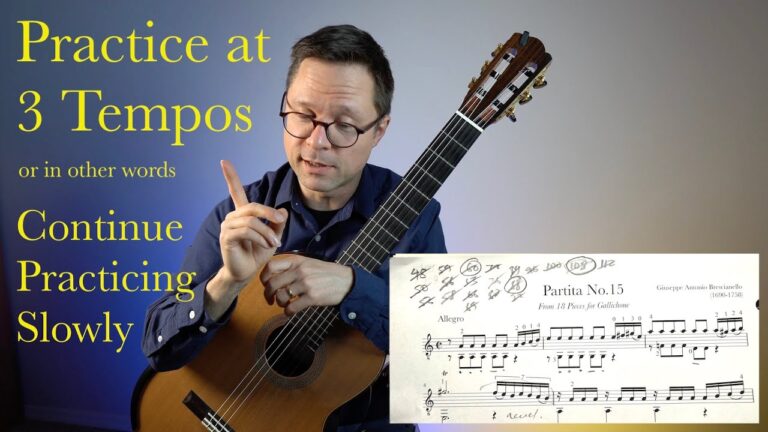A lesson on how to not look at the left hand and fretboard while playing guitar. This is question by Alexey via my YouTube channel:
Could you give a lesson…on how to learn to play without constantly staring at the fretboard? You seem to be one of the few guitarists – even among professionals – who seem to manage it effortlessly.
Please note: It’s okay to look at the left hand but not being able to look away, tensing up in that static position, or not being able to play while reading music is the focus here. I’ll also say, that because of my weekly recording schedule I am reading the music most of the time. So, out of necessity, I’m rarely looking at the left hand in my online videos. When I learn a piece very well and memorize it you’ll see me looking left much more often. It’s okay to look left but it should be an on and off experience and relaxed enough that you don’t build up tension or have bad posture and positions.
Now let’s consider three main factors involved in gaining confidence not looking at the left hand.
Technique Practice
Longterm technique practice can really help solidify the muscle memory involved in trusting the left hand. I always look left when learning a new exercise in order to solidify the muscle memory and gain confidence before trying it without looking.
Position playing can really help build confidence within a position so you only have to focus on a clean shift and then continue with ease and less variables. Once position playing is under control then shift exercises will build confidence shifting from one position to another.
If you need a technique book with tons of exercises you can check out my: Classical Guitar Technique book.
Theory and Fretboard Knowledge
Being able to translate the notes on the page to the layout of the fretboard and understanding musical intervals in terms of frets and shapes can help build left hand confidence. This reduces the variables considerably but it does take a long time.
Playing within a key and knowing the scale and chord patterns help reduce the possible notes that will occur. This is connected to position playing and technique but is an extra layer of confidence.
Knowing your musical intervals and how that translates to the fretboard can help you finger a note or shift up with both knowing the distance between the notes as well as the actual notes themselves.
Understanding how the fretboard works and being familiar with it is also a huge factor. This is one of the reasons I made the book Exploring the Fretboard: 100 Exercises for Intermediate Guitar.
Sight Reading Ability
Having sight reading skills and experience can allow you to read music efficiently in combination with the muscle memory of your technique practice and thus enable you to not look left.
Playing through method books and sight reading books can be helpful. But also, consider my own experience. I taught 30 students at a time and so weekly I might be reading through 200 pieces with them. I’ve also played tons of chamber music and sight read music in casual gigs. This all contributes to sight reading and focus abilities. One of my favourite books for technique-to-sight-reading is Scale Pattern Studies by Aaron Shearer – Very comprehensive, scales and melodic sight reading.
Create a Balanced Practice Session
Non of this is stressful or difficult to learn but you do need a balanced practice session in order to easily integrate these ideas over longterm practice. See my article and lesson on How to Practice Music and Organize Your Practice Session.
Feel free to leave other comments or questions below.
Subscribe to the free membership newsletter and consider supporting the site. This video was performed on a Douglass Scott classical guitar with Aquila Cristallo hard tension strings and a Le Support guitar rest. All my gear here.




